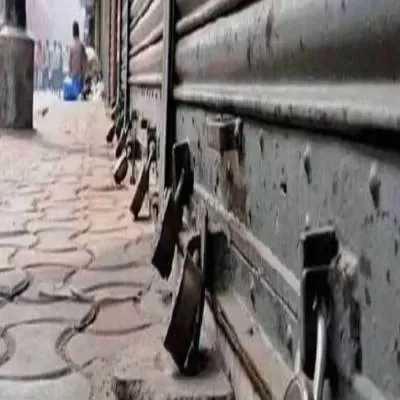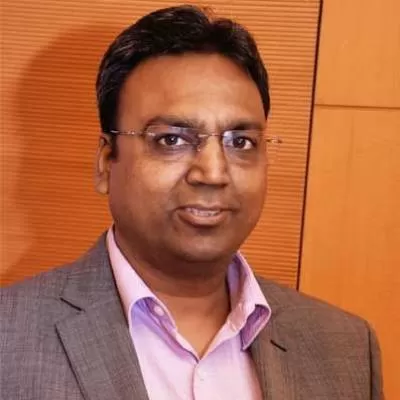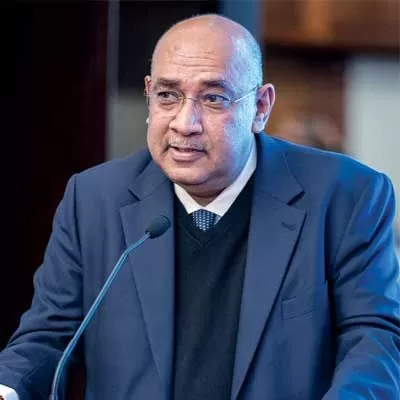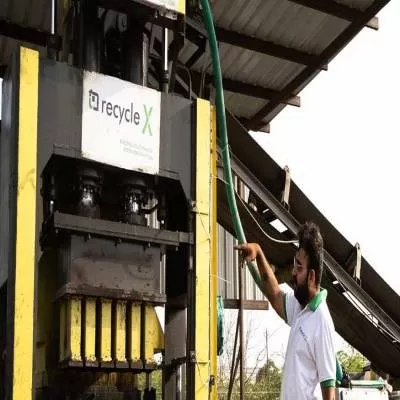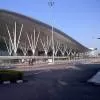- Home
- Infrastructure Urban
- ECONOMY & POLICY
- I love to infuse new-age thinking into policy
I love to infuse new-age thinking into policy
CW presents the next in a series of interviews with women who have made their mark in the building and construction sector.
The term 'complete woman' is not just a cliché when it comes to Karuna Gopal - it defines her very essence. Wife, mother, leader, innovator, poet and artist are amongst the many roles she inhabits with ease, melding them effortlessly with her professional descriptor as President, Foundation for Futuristic Cities (FFC), which is working to make Indian cities sustainable and global. In fact, she will soon launch a unique project, a first-of-its-kind global urban lab of ideas to encourage a thought process on contemporary problems, solutions, ideas and views on all aspects of urban culture using art, architecture, and writing.
Gopal's team at FFC has already worked with several JNNURM Mission cities in India giving technical advisory support for city-level reforms. She has also been associated with the City Development and Reform Projects of DFID (UK), USAID and World Bank-developed knowledge products and policy guidance documents to accelerate urban transformation, as well as serving as faculty/mentor for the ASCI/WBI (World Bank Institute) Certification Programme on Urban Management. A member of the Chief Minister's Advisory Council of Andhra Pradesh, she has played a pivotal role in forging a 'sister state' partnership between Andhra Pradesh and the State of Washington, US.
A prolific and widely published writer, Gopal also teaches courses on governance reforms and leadership to policymakers and bureaucrats; lectures at India's best B-schools; and addresses global conferences on sustainable and smart cities. In fact, she has just returned from a Sustainable Cities Programme in the US for young global leaders when we catch up with her to learn more about her career and how she has forged a remarkable life. Excerpts from the interview with Group Managing Editor, Falguni Padode:
We heard you were in the US on a Sustainable Cities Programme. Can you tell us a little about it?
I was invited to participate in the 'International Visitor Leadership Programme' of the US Department of State. It is one of the most prestigious programmes ofthe US Government meant for current and emerging foreign leaders. We had a chance to review US federal and state policies that affect urban communities. We explored how American cities are attempting to solve urban development challenges such as affordable housing, growing transportation infrastructure demands, health problems caused by pollution, public safety, natural disaster mitigation and waste management.
Do you think India will benefit from your trip?
I am hoping I can influence some change back here based on my exposure. I met a lot of key people from the federal departments in Washington DC and from the city governments of San Francisco, Milwaukee, New Orleans and Seattle. For instance, Plan Bay Area is a very ambitious joint regional planning effort led by the Association of Bay Area Governments and Metropolitan Transportation Commission involving nine counties and 101 cities. Such a plan can perhaps help India's largest urban region, the NCR (National Capital Region).
Milwaukee's rejuvenation effort, 'From Effluents to Affluence', can give us pointers for viable PPP brownfield rejuvenation. The rebuilding efforts of New Orleans after the devastation by Katrina can direct us towards pre-emptive action just as Seattle's sustainable anti-sprawl measures and technology deployment for smart growth can certainly help Indian cities.
What inspired you to venture into the world of urban development?
It happened by chance. Back in 2001, as founder CEO of a corporate strategy firm Confluence Consulting, I was navigating visioning exercises for corporates. Around the same time, bilateral and multilateral agencies like the World Bank, DFID (UK) and USAID were looking at 'Corporatisation of City Agencies'. As my expertise was relevant, I was invited to navigate a visioning exercise for Hyderabad city sponsored by Cities Alliance, which in turn led to other assignments in the urban domain.
Tell us something about your early years in this field.
We did a lot of institutional reforms work, soiled our hands thoroughly. We had a rare view into the gut of our city agencies, understood the systemic flaws and learnt just how 'City Visions' end up as mere documents meant to decorate walls.
As the President of FFC, how do you view the current state of urban development in India? What is your outlook for the future?
I believe that the Indian urban system, the second largest in the world, can trigger exceptional economic prosperity - but, only if managed well. Poised to contribute around 70 per cent of the nation's GDP, the promising Indian urban system is paradoxically slipping into urban decay. Versatile but vulnerable, Indian cities are victims of chaotic and unplanned growth. The reasons for this state are complex and layered. The top visible layer is rapid in-migration into cities, unplanned growth, inadequate investments on infrastructure, capacity and capability gaps in civic agencies and lack of collective action.
Dig a little deeper and you will see reactive plans, poor enforcement, disconnect of planning agencies with implementing agencies, data asymmetry and reliability, planning as politics, etc. If you go even deeper, you will see the systemic problems. The metropolitan governance framework in India has fragmented institutional responsibilities, making consensus impossible. It is a product of outdated municipal laws. Each city has anywhere between 15 and 30 agencies dealing with city management. These agencies have ambiguous role definitions, overlapping jurisdictions, and budgetary and staff deficits. Given the above challenges, I feel every stakeholder has to join this game of urban transformation. Better soon than later.
How have the works undertaken by this organisation contributed to making our cities liveable? Tell us about one landmark initiative...
Based on the theme 'Vibrant Cities for a Vibrant Economy', we at FFC wanted to create an ecosystem to accelerate 'Public, Private, People, Partnership' for liveable cities. We knew that Indian cities needed more than just city development plans and capital investments. JNNURM (Jawaharlal Nehru National Urban Renewal Mission) did inject adrenaline into the Indian urban system, but this mammoth programme was not adequately propped by collective action. In September 2009, we launched 'Citizens for City' in Hyderabad - a contest that sought strategies for transforming the city. We appealed to the city's citizens to join us in architecting the city's future. We coaxed them to come forward with their ideas. We cajoled them to contribute strategies. 'Let's make Hyderabad a World Class City', we urged.
More than 100 organisations participated - scientists, IT professionals, business leaders, professors and students stepped in as city angels. Winning, it seemed, was secondary to the spirit of participation. GE, Infosys, Deloitte, ADP, Honeywell, ISRO (Indian Space Research Organisation), CDAC (Centre for Development of Advanced Computing), IIIT (International Institute of Information Technology), NIN (National Institute of Nutrition) and ISB (Indian School of Business) are just some of the names that adorned the roster.
We pioneered this initiative and piloted it in Hyderabad. As it is scalable and replicable, other Indian cities can use the format. We wanted every corporate house to align its CSR goals towards city development. I thought it is a wonderful way to demonstrate their commitment to the triple bottomline while making their host cities liveable.
In fact, we have recently published a knowledge product and guidance document, Sculpt Your City.
If asked to pick any five areas in urban development that need to be changed for the country's betterment, what would your choice be, and why?
1. Indian cities need visions! We need city visions not just master plans. Master plans are mere spatial plans. Visions should necessarily articulate economic development, environmental and equity outcomes for a city. They have to be collective visions.
2. Cities have to be co-created: I strongly believe that we have to co-create cities in India. The government, the private sector and civil society together have to architect their growth. All world cities were built on a healthy partnership between the government and citizens. Cities become vulnerable if citizens stay out of the game. Tell me, can any business house succeed if the city itself fails?
3. Infrastructure investments have to prioritised based on city needs: We need to go beyond mere global approaches for investments or blanket plans for metros.
4. Technologies have to be leveraged to make Indian cities liveable and sustainable: Paris, a technology laggard for years, is a fully wired city now. South Korea's smart city plan is commendable. A small country like Croatia tucked away in Eastern Europe is further ahead of us in technology absorption.
5. Private investments in water supply and sanitation services: If PPPs are restricted to just swanky airports flyovers and roads, how can we have equitable growth and development?
How would you compare the process of creating urban development programmes internationally with that in India?
Indian cities are victims of government policy. India always had a rural bias. The
government believed that India lived in its villages and never proactively invested in cities. JNNURM was the first ever effort to rejuvenate cities in 63 years of independent India! The Ministry of Urban Development and Poverty Alleviation is also a child that was conceived very late - almost like an afterthought. India's annual per capita spending of US$17 on urban infrastructure is a mere 14 per cent of China's US$ 116 and a dismal 4 per cent of UK's US$ 39. We are not aggressive like other countries that capitalised on the 'urban advantage'.
You address international conferences on cities, and we heard that you have been invited to speak at a global forum popularly known as 'Davos for Women' in Paris. What message do you share at these forums?
I always give two messages. The first that the Indian urban system is a unique animal that is predator and angel at the same time. Second, we realise that urban transformation is an economic necessity for India, and we are learning to celebrate our cities.
How have you managed the work-life balance?
I have been accused of being a 'maximum mother'. I have a son who is developmentally disabled. He is autistic and epileptic. I have woven my career around his needs and I am proud to say that I have been a marsupial mother - I've carried my son in a pouch all over the world! I have trained him in art, and today, at 19, he is getting ready for a solo show of his paintings. He has sold his art in three countries already and managed to grab media attention too.
Amongst the many activities that you have been involved in over the years, what have you enjoyed doing the most, and why?
I love to infuse new-age thinking and innovation into governance and policy. One effort in the recent past has been to use art as a tool to usher in change. Transforming the urban scenario in India needs more than just conventional methods of treatment. As an artist, I realise that change is possible only when the logic of the brain resonates with the emotion of the heart.
Is this where you imagined you'd be when you were planning your career path? And now that you are here, how does it feel?
I was trained in genetics, software development, strategic management, but not in urban management. But, I am happily ensconced in this game of urban transformation, and I must
say that I have no complaints! I've had several challenges in my life that demanded shifts in my career; now, it looks a divine design to me!
Have you always been interested in development?
My father was an IAS officer and so is my brother. I married the son of an IAS officer, and you can believe me when I say that our dinner table conversations used to be about amendments to the Constitution of India, development indices, poverty numbers, etc. And, they are even now!
Were you keen on keeping up the family tradition?
Although I liked the intellectual kick of ing the exam, I told myself that I was too individualistic to conform to the bureaucratic framework. So, I chose IT and the US 23 years ago. I like freedom, and my style is heuristic. I feel that if you want to influence public policy or bring about large-scale change, you don't have to make a beeline for bureaucracy or pine for a political post. Academics, actors and artists too can influence public policy if they are passionate enough.
Karuna Gopal, President, Foundation for Futuristic CitiesCW presents the next in a series of interviews with women who have made their mark in the building and construction sector.The term 'complete woman' is not just a cliché when it comes to Karuna Gopal - it defines her very essence. Wife, mother, leader, innovator, poet and artist are amongst the many roles she inhabits with ease, melding them effortlessly with her professional descriptor as President, Foundation for Futuristic Cities (FFC), which is working to make Indian cities sustainable and global. In fact, she will soon launch a unique project, a first-of-its-kind global urban lab of ideas to encourage a thought process on contemporary problems, solutions, ideas and views on all aspects of urban culture using art, architecture, and writing.Gopal's team at FFC has already worked with several JNNURM Mission cities in India giving technical advisory support for city-level reforms. She has also been associated with the City Development and Reform Projects of DFID (UK), USAID and World Bank-developed knowledge products and policy guidance documents to accelerate urban transformation, as well as serving as faculty/mentor for the ASCI/WBI (World Bank Institute) Certification Programme on Urban Management. A member of the Chief Minister's Advisory Council of Andhra Pradesh, she has played a pivotal role in forging a 'sister state' partnership between Andhra Pradesh and the State of Washington, US.A prolific and widely published writer, Gopal also teaches courses on governance reforms and leadership to policymakers and bureaucrats; lectures at India's best B-schools; and addresses global conferences on sustainable and smart cities. In fact, she has just returned from a Sustainable Cities Programme in the US for young global leaders when we catch up with her to learn more about her career and how she has forged a remarkable life. Excerpts from the interview with Group Managing Editor, Falguni Padode:We heard you were in the US on a Sustainable Cities Programme. Can you tell us a little about it?I was invited to participate in the 'International Visitor Leadership Programme' of the US Department of State. It is one of the most prestigious programmes ofthe US Government meant for current and emerging foreign leaders. We had a chance to review US federal and state policies that affect urban communities. We explored how American cities are attempting to solve urban development challenges such as affordable housing, growing transportation infrastructure demands, health problems caused by pollution, public safety, natural disaster mitigation and waste management.Do you think India will benefit from your trip?I am hoping I can influence some change back here based on my exposure. I met a lot of key people from the federal departments in Washington DC and from the city governments of San Francisco, Milwaukee, New Orleans and Seattle. For instance, Plan Bay Area is a very ambitious joint regional planning effort led by the Association of Bay Area Governments and Metropolitan Transportation Commission involving nine counties and 101 cities. Such a plan can perhaps help India's largest urban region, the NCR (National Capital Region).Milwaukee's rejuvenation effort, 'From Effluents to Affluence', can give us pointers for viable PPP brownfield rejuvenation. The rebuilding efforts of New Orleans after the devastation by Katrina can direct us towards pre-emptive action just as Seattle's sustainable anti-sprawl measures and technology deployment for smart growth can certainly help Indian cities.What inspired you to venture into the world of urban development?It happened by chance. Back in 2001, as founder CEO of a corporate strategy firm Confluence Consulting, I was navigating visioning exercises for corporates. Around the same time, bilateral and multilateral agencies like the World Bank, DFID (UK) and USAID were looking at 'Corporatisation of City Agencies'. As my expertise was relevant, I was invited to navigate a visioning exercise for Hyderabad city sponsored by Cities Alliance, which in turn led to other assignments in the urban domain.Tell us something about your early years in this field.We did a lot of institutional reforms work, soiled our hands thoroughly. We had a rare view into the gut of our city agencies, understood the systemic flaws and learnt just how 'City Visions' end up as mere documents meant to decorate walls.As the President of FFC, how do you view the current state of urban development in India? What is your outlook for the future?I believe that the Indian urban system, the second largest in the world, can trigger exceptional economic prosperity - but, only if managed well. Poised to contribute around 70 per cent of the nation's GDP, the promising Indian urban system is paradoxically slipping into urban decay. Versatile but vulnerable, Indian cities are victims of chaotic and unplanned growth. The reasons for this state are complex and layered. The top visible layer is rapid in-migration into cities, unplanned growth, inadequate investments on infrastructure, capacity and capability gaps in civic agencies and lack of collective action.Dig a little deeper and you will see reactive plans, poor enforcement, disconnect of planning agencies with implementing agencies, data asymmetry and reliability, planning as politics, etc. If you go even deeper, you will see the systemic problems. The metropolitan governance framework in India has fragmented institutional responsibilities, making consensus impossible. It is a product of outdated municipal laws. Each city has anywhere between 15 and 30 agencies dealing with city management. These agencies have ambiguous role definitions, overlapping jurisdictions, and budgetary and staff deficits. Given the above challenges, I feel every stakeholder has to join this game of urban transformation. Better soon than later.How have the works undertaken by this organisation contributed to making our cities liveable? Tell us about one landmark initiative...Based on the theme 'Vibrant Cities for a Vibrant Economy', we at FFC wanted to create an ecosystem to accelerate 'Public, Private, People, Partnership' for liveable cities. We knew that Indian cities needed more than just city development plans and capital investments. JNNURM (Jawaharlal Nehru National Urban Renewal Mission) did inject adrenaline into the Indian urban system, but this mammoth programme was not adequately propped by collective action. In September 2009, we launched 'Citizens for City' in Hyderabad - a contest that sought strategies for transforming the city. We appealed to the city's citizens to join us in architecting the city's future. We coaxed them to come forward with their ideas. We cajoled them to contribute strategies. 'Let's make Hyderabad a World Class City', we urged. More than 100 organisations participated - scientists, IT professionals, business leaders, professors and students stepped in as city angels. Winning, it seemed, was secondary to the spirit of participation. GE, Infosys, Deloitte, ADP, Honeywell, ISRO (Indian Space Research Organisation), CDAC (Centre for Development of Advanced Computing), IIIT (International Institute of Information Technology), NIN (National Institute of Nutrition) and ISB (Indian School of Business) are just some of the names that adorned the roster.We pioneered this initiative and piloted it in Hyderabad. As it is scalable and replicable, other Indian cities can use the format. We wanted every corporate house to align its CSR goals towards city development. I thought it is a wonderful way to demonstrate their commitment to the triple bottomline while making their host cities liveable.In fact, we have recently published a knowledge product and guidance document, Sculpt Your City.If asked to pick any five areas in urban development that need to be changed for the country's betterment, what would your choice be, and why? 1. Indian cities need visions! We need city visions not just master plans. Master plans are mere spatial plans. Visions should necessarily articulate economic development, environmental and equity outcomes for a city. They have to be collective visions. 2. Cities have to be co-created: I strongly believe that we have to co-create cities in India. The government, the private sector and civil society together have to architect their growth. All world cities were built on a healthy partnership between the government and citizens. Cities become vulnerable if citizens stay out of the game. Tell me, can any business house succeed if the city itself fails? 3. Infrastructure investments have to prioritised based on city needs: We need to go beyond mere global approaches for investments or blanket plans for metros. 4. Technologies have to be leveraged to make Indian cities liveable and sustainable: Paris, a technology laggard for years, is a fully wired city now. South Korea's smart city plan is commendable. A small country like Croatia tucked away in Eastern Europe is further ahead of us in technology absorption. 5. Private investments in water supply and sanitation services: If PPPs are restricted to just swanky airports flyovers and roads, how can we have equitable growth and development?How would you compare the process of creating urban development programmes internationally with that in India?Indian cities are victims of government policy. India always had a rural bias. The government believed that India lived in its villages and never proactively invested in cities. JNNURM was the first ever effort to rejuvenate cities in 63 years of independent India! The Ministry of Urban Development and Poverty Alleviation is also a child that was conceived very late - almost like an afterthought. India's annual per capita spending of US$17 on urban infrastructure is a mere 14 per cent of China's US$ 116 and a dismal 4 per cent of UK's US$ 39. We are not aggressive like other countries that capitalised on the 'urban advantage'.You address international conferences on cities, and we heard that you have been invited to speak at a global forum popularly known as 'Davos for Women' in Paris. What message do you share at these forums? I always give two messages. The first that the Indian urban system is a unique animal that is predator and angel at the same time. Second, we realise that urban transformation is an economic necessity for India, and we are learning to celebrate our cities.How have you managed the work-life balance?I have been accused of being a 'maximum mother'. I have a son who is developmentally disabled. He is autistic and epileptic. I have woven my career around his needs and I am proud to say that I have been a marsupial mother - I've carried my son in a pouch all over the world! I have trained him in art, and today, at 19, he is getting ready for a solo show of his paintings. He has sold his art in three countries already and managed to grab media attention too.Amongst the many activities that you have been involved in over the years, what have you enjoyed doing the most, and why?I love to infuse new-age thinking and innovation into governance and policy. One effort in the recent past has been to use art as a tool to usher in change. Transforming the urban scenario in India needs more than just conventional methods of treatment. As an artist, I realise that change is possible only when the logic of the brain resonates with the emotion of the heart.Is this where you imagined you'd be when you were planning your career path? And now that you are here, how does it feel?I was trained in genetics, software development, strategic management, but not in urban management. But, I am happily ensconced in this game of urban transformation, and I must say that I have no complaints! I've had several challenges in my life that demanded shifts in my career; now, it looks a divine design to me!Have you always been interested in development?My father was an IAS officer and so is my brother. I married the son of an IAS officer, and you can believe me when I say that our dinner table conversations used to be about amendments to the Constitution of India, development indices, poverty numbers, etc. And, they are even now!Were you keen on keeping up the family tradition?Although I liked the intellectual kick of ing the exam, I told myself that I was too individualistic to conform to the bureaucratic framework. So, I chose IT and the US 23 years ago. I like freedom, and my style is heuristic. I feel that if you want to influence public policy or bring about large-scale change, you don't have to make a beeline for bureaucracy or pine for a political post. Academics, actors and artists too can influence public policy if they are passionate enough.


